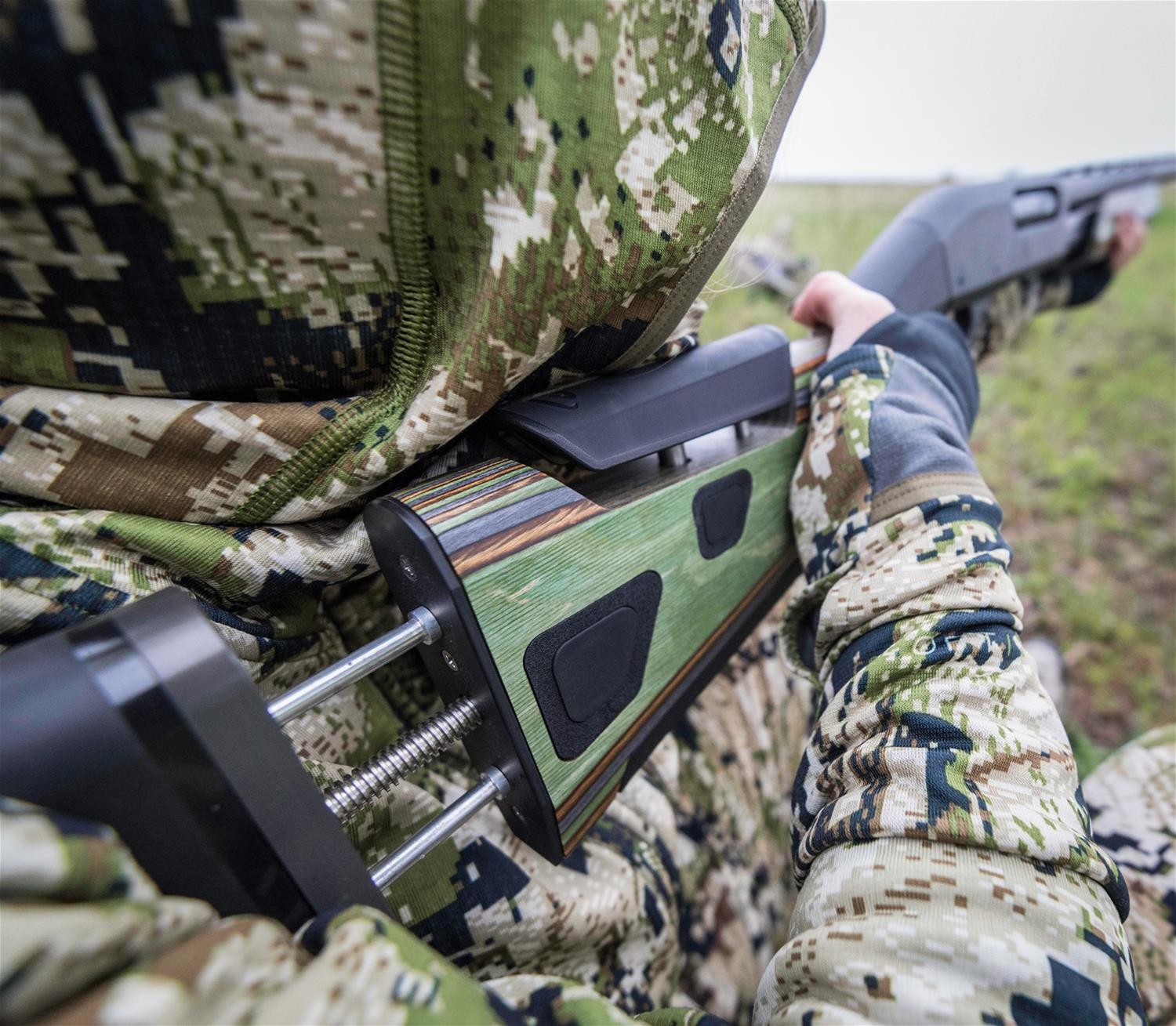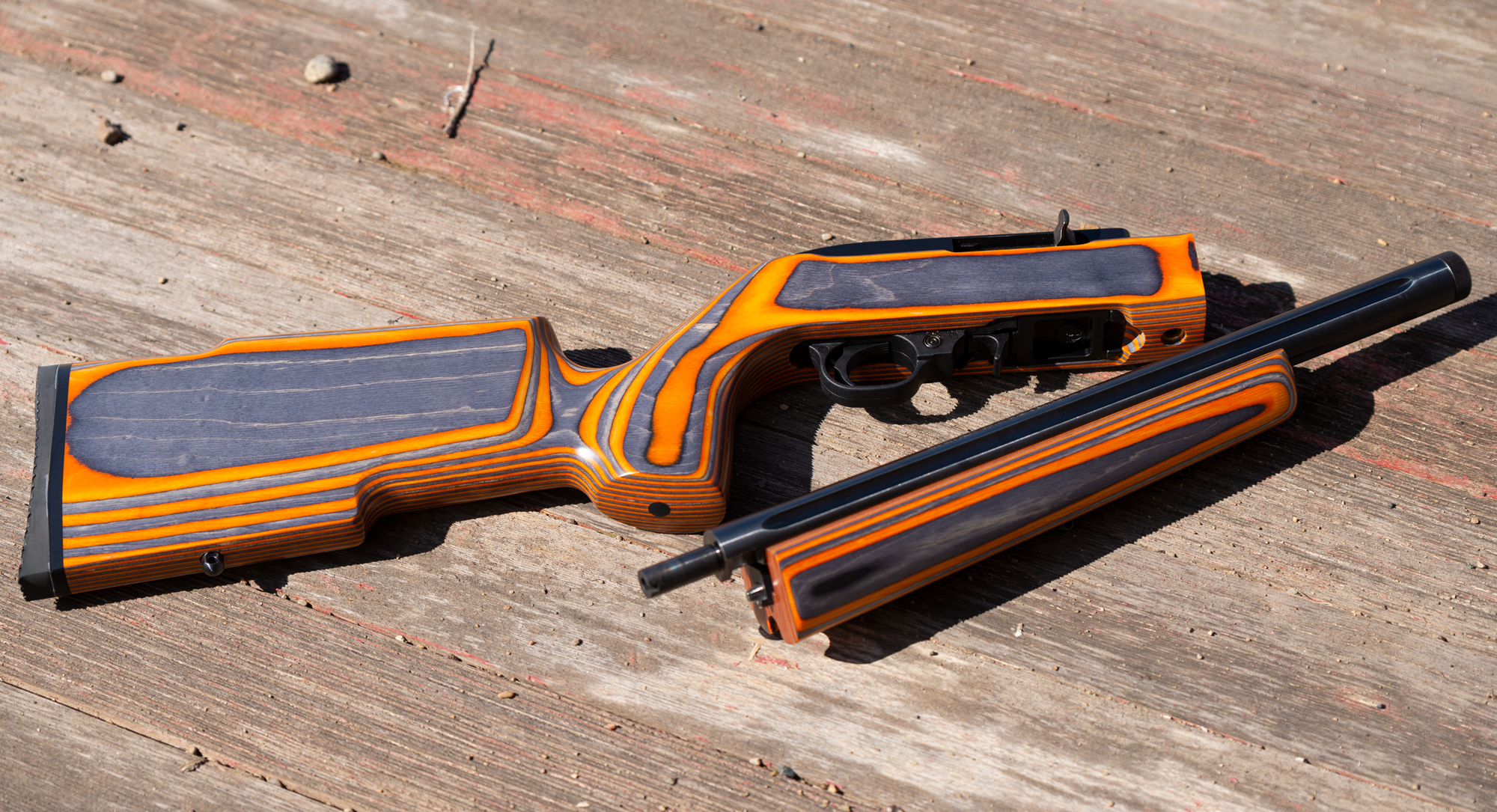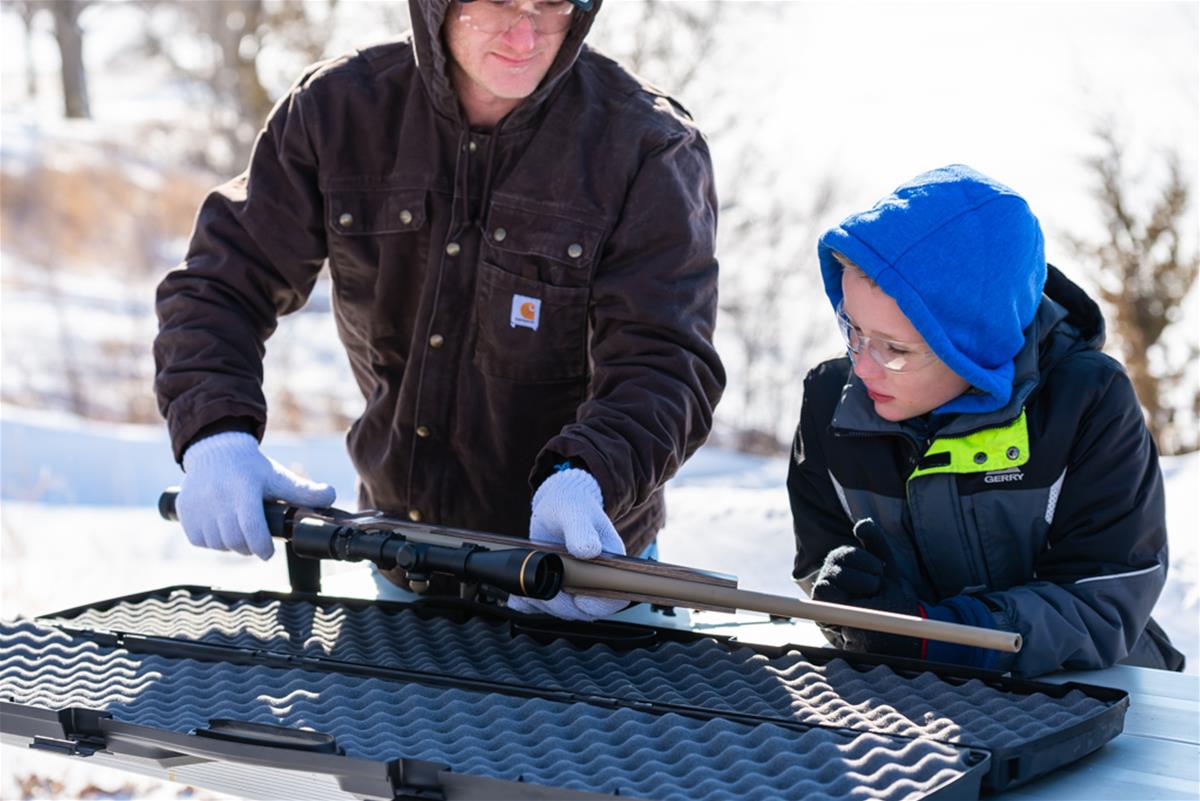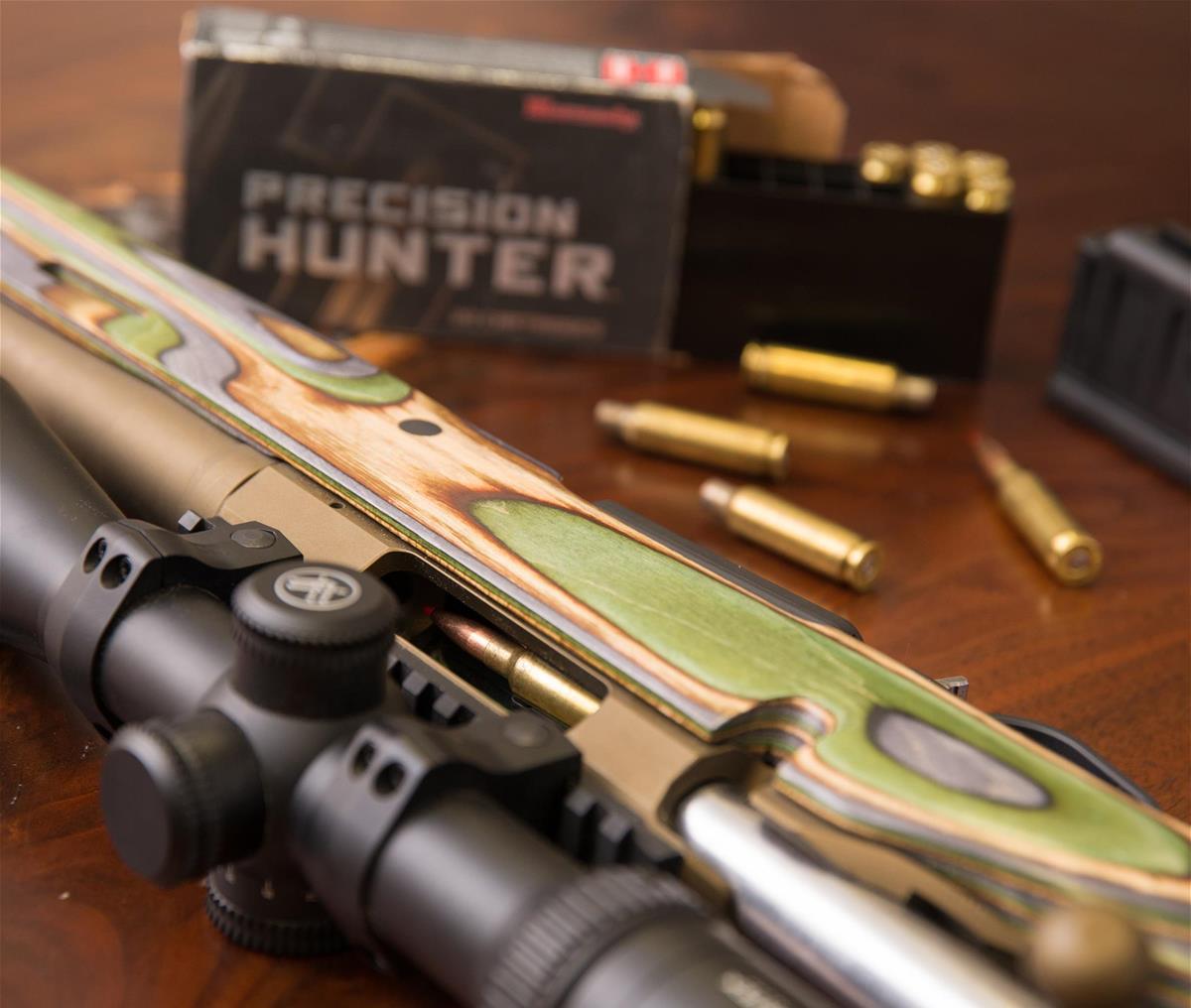Firearms, as survivalists will tell you repeatedly, are priceless assets. They are crucial when it comes to such activities as hunting or handling situations that involve self-defense. As you may have guessed, self–defense is the one of the main reasons you have gun rights in the first place! However,
having those rights, possessing a firearm, and learning to shoot shouldn't be your only priorities. You should never forget the importance of firearm safety. Firearms can only increase your safety if you always handle them properly and with caution.
Ignoring gun safety practices can lead to injury or death. This cannot be over-emphasized. Guns don't give second chances. Just a single slip up and the results may be catastrophic.
As a gun owner, strict adherence to firearm safety rules should be your top priority. We have compiled rules that will help you to handle your gun with the utmost safety. Before we dive into gun safety tips, let us first have a quick look into how guns work.

How Guns Work
Ballistics involves three essential parts. These parts are exterior, terminal, and interior. In layman's language, interior ballistics include the process that goes on inside a gun after the trigger is pulled. When a shooter does this, the hammer is released by the sear and a complex event-chain occurs. This chain of events, although quite complex, is totally predictable.
This whole sequence occurs within a matter of milliseconds.
Here is the process:
1. The gun’s hammer strikes the firing pin with a forward rotation. This drives the firing pin forward. If the hammer is absent, the striker simply moves forward.
2. The firing pin's tip then hits and deforms the primer cup. This deformation crushes the compound that is inside the primer cup against the anvil beneath.
3. An explosion of the priming compound occurs and sends hot gas with rapid expansion into the cartridge case via the flash hole. This expanding gas leads to a rise in pressure and temperature within the case, therefore, initiating the propellant's ignition.
4. An extremely hot gas with temperatures of around 5,600ºF is then generated from the burning propellant. This gas leads to a rapid pressure increase within the case of the cartridge. Pressure within the cartridge case can speak to a high level of approximately 62,000 psi (pounds per square inch). The rising pressure causes outward ironing of the sidewalls of the case against the walls of the chamber. Thus a seal is created which prevents the escape of the hot gas towards the rear.
5. At around 2,000-10,000 PSI, i.e. the pressure to start a shot, the neck tension of the case is overcome by the bullet. This allows the acceleration of the propellant gas through the bore.
6. After traversing a brief distance, the bullet engraves by coming into contact with the rifling. While the bullet's acceleration is occurring, the lands of the rifling grasp the surface of the bullet forcing it to spin. The bullet then breaks the barrier of sound when it gets around a third of the way through the barrel.
7. The increasing acceleration of the bullet further through the barrel leads to an increase in internal volume. This increase leads to a drop in pressure within the chamber. Relentless burning of the propellant gas counterbalances the drop in pressure to a certain extent. However, it doesn’t prevent the drop.
8. A hot jet of propellant gas traveling at a high velocity is then released as the muzzle gets cleared by the bullet. This jet of gas is still at a pressure that averages 10-30% of the peak pressure inside the chamber. It compresses air around the muzzle as it escapes; therefore resulting in what is commonly referred to as a “loud report”.
9. A
drop in the pressure within the chamber and barrel to harmless levels then allows the sidewalls of the cartridge case to spring away from the walls of the chamber for extraction.
 Gun Safety Rules
Gun Safety Rules
Safety Precautions to Follow:
Treat your gun like a loaded weapon at all times.
Always assume your gun is loaded whether you are sure you unloaded it after use or not. Humans are prone to error. You don’t want your weapon to cause an accident simply because you handled it carelessly thinking it’s unloaded.
Always store an unloaded gun and only load when you are ready to use it
You should ensure your gun is unloaded at all times and only load it when you want to use it. The only exception to keeping a loaded gun is if you
store it in a safe. Keeping a loaded gun out in the open is very risky especially if you have a child.
However, you should keep ammunition in a place that you can access quickly, especially if you need to load your gun fast. Remember, a burglar won’t sit back and relax while you go through drawers and cartons trying to find your ammunition.
The best thing to do when you pick a gun up is to engage the safety mechanism. Then remove the magazine from the gun if present and check the chamber to ensure it doesn’t contain any ammunition. If you are unfamiliar with the process involved in inspecting the chamber or opening the action, leave the weapon where it is and get someone with gun knowledge to help.
Don’t point your firearm at anything you have no intention of shooting
 Never point a firearm at anything
Never point a firearm at anything or anyone you don’t intend to fire at. This is a rule you should always observe even if you know your gun is unloaded. The best practice is keeping your firearm pointed in a neutral direction such as the ground.
Avoid touching the trigger until you are ready to fire
Don’t keep your finger on the gun’s trigger except if you are ready to shoot. If you are holding your gun, ensure your trigger finger is either along the firearm’s side or resting on the trigger guard. Never rest it on the trigger if you are not ready to pull.
Ensure the barrel isn’t obstructed
Always check to make sure your weapon's barrel is
free from obstruction before firing. However, when checking for obstruction never point the gun at your head. You should check the barrel on such occasions as when you've just fallen or waded through water.
Familiarize yourself with your target and its surroundings
You should always identify your target with absolute certainty and be aware of the surroundings beyond it. Don’t fire at anything you haven’t identified yet. If you are in doubt, don’t fire. This is very important in hunting escapades as well as target practice.
When you are hunting, you should be sure of your target location and the positions of your hunting buddies before firing. During practice, identify what kind of material your target is made from to avoid accidental ricochets.
Don’t rely on the safety of your gun
Your gun’s safety mechanism is very important. However, you shouldn’t depend on it entirely. Don’t handle a gun with less caution because the safety catch is on. Avoid accidents at all costs using the tips we have listed above.
Wear protective gear
Protective gear is crucial for your ears and eyes. These two can suffer damage if you neglect protection. Remember that a gunshot is simply a controlled explosion, and explosions don’t fare well with sensitive tissue.
Most guns tend to be loud and the emission of debris is not uncommon,
so wear hearing protectors and glasses whenever they are available. If you are in a survivalist situation, improvise with what is available.
Get familiar with your firearm
You should know your gun intimately. Know every crook and cranny. Be so familiar with it that you can disassemble and reassemble it without any difficulty. This will ensure you know the condition of your gun and which parts, if any, are likely to malfunction.
You should also get familiar with the ammunition your gun requires, its range, and what it’s capable of.
Keep your gun clean at all times
You should keep your gun in ideal firing conditions by
cleaning it every time after use. Failure to do this may impede the functionality of your gun; therefore making it unsafe or useless in a life or death situation. Ensure your gun is maintained regularly.
Use the right ammunition for your gun
You should never use ammunition that isn’t recommended for your weapon. You can only fire ammunition safely if the build of your gun is meant to handle it. Do not fire your weapon unless you are sure the ammunition you have is right.
You can check the type of ammunition recommended for your gun on its barrel. Most guns have this info stamped there. Boxes of ammunition also come with info printed on them that you can use to identify the type of ammunition inside.
 Don’t use expired ammunition
Don’t use expired ammunition
Despite most ammunition having a pretty decent shelf life, certain conditions can result in their expiry. An example is poor storage conditions. You can avoid this by ensuring your ammunition is stored in a cool, dry place. After all, you may need to resort to old ammunition if no other option is available.
Treat misfires with caution
Take your time before
confronting a misfire to ensure the shot isn’t just delayed. A delayed shot may result in an accident if you rush to check the gun. The best thing to do in a misfire is to keep your gun trained at the target for a few seconds to be sure it’s a misfire.
Choose a weapon that suits you
Go for a firearm that you are comfortable with. If a gun feels like it will be bothersome especially when carrying it around, it isn't for you. Try different guns to feel which grip best fits your hand the most comfortably.
Practice
You should maintain and improve your shooting skills with regular practice. Practice also keeps your muscles in optimum shape such that if you have to fire a shot under pressure, your muscle memory will help you retain accuracy and efficiency.
Store your gun in a safe place
This cannot be over-emphasized. Always keep your weapon in a safe place where your kids or unauthorized personnel won’t be able to reach it. Never leave your gun out in the open or in a drawer that can’t be locked.
You are also advised to store your gun separate from the ammunition. But, remember to keep them somewhere you can reach easily.
When it comes to kids, teach them to avoid a gun. If they see one, they should refrain from touching it and inform an adult immediately.
Reload ammunition with proper care
You may need to
reload your ammunition from time to time. When this happens to be the case, always adhere to the precautions set in place to ensure your safety. Store your primes separate from your powder and make sure you are not using damaged shells or putting in excess powder.
Avoid alcohol use or prescribed over-the-counter drugs if you intend to go shooting
Any substance that may impair your normal physical or psychological functioning should be avoided before or during handling or shooting a gun. Just like other machinery, guns may cause accidents if they are in the hands of an impaired person.
Know what constitutes the safe usage of a gun
You should know how to operate a gun before you handle one. You should be aware of the different basic parts of a gun and their purposes, how the action can be opened and closed safely, and the entire process for removing ammunition or magazines from the gun.
Conclusion
Gun ownership rights stipulate you have the right to bear arms. However, it is your sole responsibility to ensure those close to you are safe from gun-related mishaps. As a gun owner, make sure you are aware of your gun rights as well as your obligations and responsibilities. Even thought it can be used to protect, it can be a very dangerous weapon if mishandled or use without great caution.